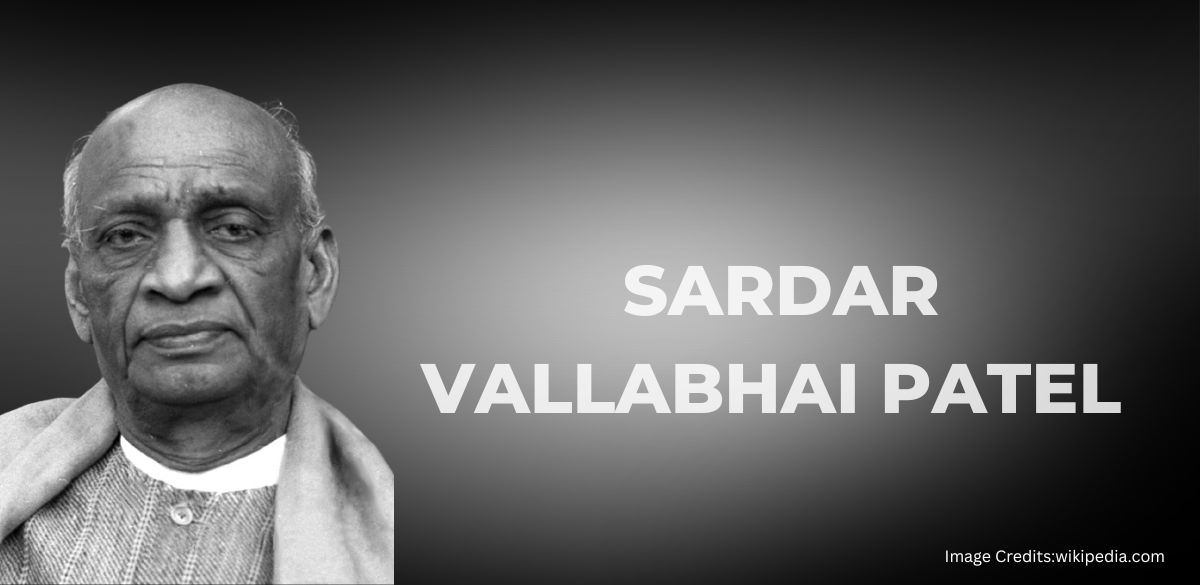Sardar Vallabhbhai Patel (1875–1950) was a towering figure in India’s history, for he cemented the unity of free India by integrating more than 552 princely states into the Indian Union. However, India had become free in 1947; Goa, Daman, Diu, and a few other territories were joined later. Patel’s bold diplomacy was the base for a united India, and his tireless effort to consolidate the country earned him the title “Iron Man of India.” Mahatma Gandhi inspired Patel, and his journey was marked by an unwavering resolve to serve India, even amidst challenges from monarchies, local rulers, and ideological groups.
Table of Contents
Early Life and Education
He was born on 31 October 1875 at Nadiad, Gujarat, into a family of Leva Patidar farmers. His father, Jhaverbhai, was an army man of the Rani of Jhansi, and his mother, Ladbai, was very religious. His early education was in Gujarati medium schools, which soon shifted to English studies. He passed high school in 1897. In 1910, he travelled to England and studied law at the Inns of Court, returning to India in 1913 to practice law in Godhra, Gujarat. His excellent sense of the law and judgment brought him lucrative offers from the British, yet he declined these offers; he opted to resist colonialism.
Leadership
His first critical involvement in the independence movement came when he led the Kheda Satyagraha in 1918 through a “No Tax” campaign for farmers devastated by floods. In recognition of his efforts to rally the masses, Patel was called the “Sardar” by women from the locale. Later, he championed the cause of the Non-Cooperation Movement undertaken by Gandhi and travelled to India, raising funds and furthering the message of freedom.
Patel played pivotal roles in the Bardoli and Borsad movements, campaigning militantly against unfair British taxation. In 1930, he was sent behind bars for participating in the Salt March of Gandhi; his incendiary words during the Salt Satyagraha motivated the Indians to action. Patel spearheaded the movement in all Gujarati areas on behalf of Gandhi, who himself was arrested. Later, he was made President of the Indian National Congress in 1931. There, he started making it ready for the coming time of a secular nation and declared human rights and humanity’s freedom.
Role to Unite India
Patel became the Deputy Prime Minister and Home Minister after India achieved independence in 1947. He took up the challenge of integrating more than 550 princely states by touring and negotiating with regional rulers. Many states joined without a fight, but not all: Hyderabad, Junagarh, and Jammu & Kashmir, for example. Through a mix of negotiations and strategic military action, he brought these territories into the Indian Dominion.
Patel created the base of the administrative structure in India, and has been a great success. He favoured establishing the Indian Administrative Service (IAS) and the Indian Police Service (IPS). Patel also knew that solid governance had to be kept in mind to stabilise the newly formed nation. It included the development of infrastructural facilities, too. For example, the ancient Somnath Temple was restored and rebuilt, but foreign invaders destroyed it.
Principals
Mahatma Gandhi enjoyed a peculiar relationship with Sardar Patel, who was entirely in harmony with Gandhi’s philosophy of non-violence and Satyagraha. He was one of those leaders with no ideological differences from other leaders like Nehru; he put national amity above personal ambition. Sardar Patel had already withdrawn his candidature for Prime Minister at the behest of Gandhi, which is testimony to his amity commitment. He even, when criticised, backed the Quit India Movement in 1942, which had made him imprisoned for three years.
The assassination of Gandhi in 1948 was a great shock to Patel and caused him much pain. He later explained a heart attack he suffered as grief over the loss of his mentor. Patel’s relationship with Gandhi greatly influenced his political thinking, leading him through the freedom movement and the trying times of independence.
Legacy and Passing
Late in 1950, Patel’s health began to deteriorate. He died on 15 December of the same year. His legacy is firmly etched in the annals of India’s history. He is the “Iron Man” who visioned, led, and pragmatically built modern India. Uniting the country after gaining freedom and establishing a robust administrative structure is a testimonial to his dedication and commitment.
Today, Sardar Vallabhbhai Patel stays in the hearts of every person as the epitome of strength and unity combined with patriotism. Statues and memorials recall his works to inspire coming generations to understand the importance of national integration and respect towards his idea of a progressive, economically stable India.
The post Sardar Vallabhbhai Patel: The Iron Architect of India’s Unity appeared first on The Talented Indian.
